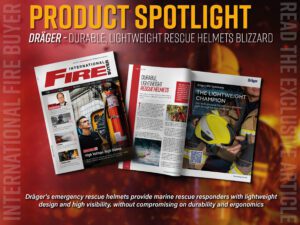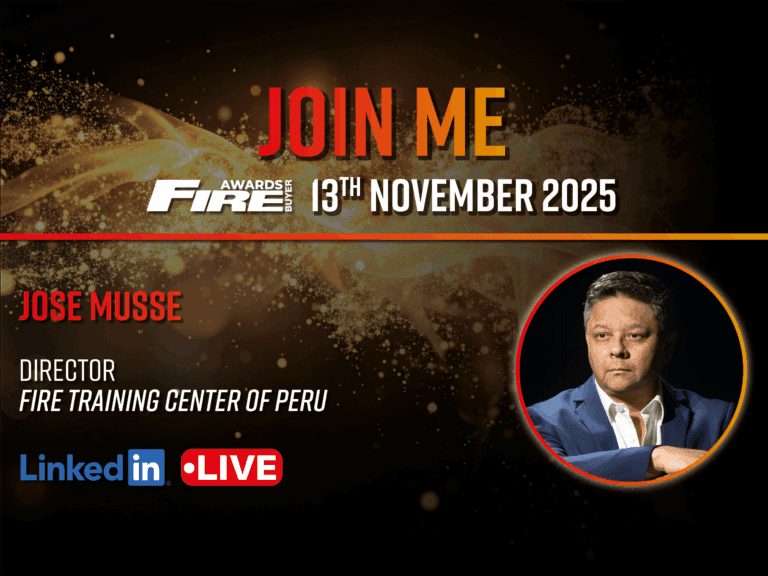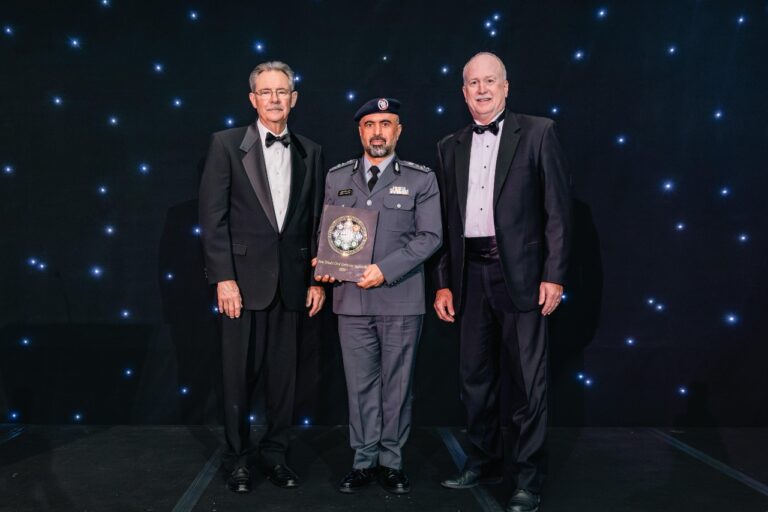Fire imaging. Hurricane relief. Flood monitoring. Earthquake assistance. Search and rescue. The Predator® B Remotely Piloted Aircraft (RPA) conducts these and many other challenging missions in the American National Airspace System (NAS) routinely. Predator B’s capabilities continue to yield paradigm-changing, life-saving results and have re-shaped the aviation landscape. The U.S. Government’s interest in Predator B continues to soar primarily due to the military’s successful employment of these aircraft in austere environments like Afghanistan. Moreover, because Predator B is remotely-operated and there’s no man in the cockpit, the aircraft has become the nation’s go-to aviation asset, allowing federal agencies such as NASA and the U.S. Department of Homeland Security, Customs and Border Protection (CBP), to facilitate dangerous missions but without risk to pilots’ lives.
Predator B: Behind the controls
Predator B is built upon General Atomics’ battle-proven Predator/Gray Eagle® aircraft family, which has amassed over two-and-half million flight hours.
An evolutionary leap in RPA performance and reliability, Predator B features triple-redundant flight control systems and is engineered to operate in the NAS. The aircraft has tremendous endurance, can remain airborne for 20 to 30 hours, and is equipped with 4,000 pounds of fuel and an extremely efficient 66-foot long wingspan. This offers a significant advantage over manned aircraft that typically fly much shorter missions to 50,000 feet. Predator B flies as fast as 240 knots and has a 3,850-pound payload capacity that includes 3,000 pounds of external stores.
Predator B is currently operational with and is a highly valued asset for NASA and CBP, as well as the U.S. Air Force, U.S. Navy, the Royal Air Force, and the Italian Air Force.
To control a mission, Predator B’s crew, consisting of a pilot and sensor operator, sit side-by-side in a Ground Control Station (GCS). The pilot flies the RPA and the sensor operator tracks and identifies targets with the sensors. Satellite communications enables operators to uplink control commands to the aircraft and download payload products and imagery.
Fire imaging
First responders need as much situational awareness as possible to fight fires spread across treacherous forest terrain better. Equipped with airborne sensors that provide a wide field-of-view spanning several miles, NASA’s Predator B (‘Ikhana’) was invaluable in 2007 and 2008 for penetrating smoke and allowing fire-fighters to see far and wide across dense wilderness and treacherous terrain. Ikhana was used extensively to aid local fire-fighters against a slew of fires that represented the single largest fire in California’s history, claiming 10 lives, destroying more than 1,700 homes, burning over 200,000 acres, and forcing the evacuation of 500,000 residents. Without Ikhana’s support, however, it’s possible that these losses could have been greater.
During its two-year mission, Ikhana flew approximately 22,000 feet over more than 60 fires throughout eight western states. The aircraft leveraged its NASA-designed infrared imaging sensor to pierce through the smoke and detect hot spots of the fires. The infrared images were then processed and relayed via satellite communications to NASA where engineers overlaid the imagery on Google Maps and relayed it to fire-fighters in the field. This precise, real-time information allowed first responders and fire commanders to anticipate the speed and direction of the fire and allocate fire-fighting resources better. Having this real-time data sometimes meant the difference between life and death. During the July 2008 fire near Paradise, California, fire commanders didn’t detect an oncoming fire because its hotspot was concealed by smoke. However, Ikhana’s infrared imagery revealed the inbound wildfire, which provided fire-fighters with ample time to evacuate 10,000 residents safely, form defenses, and save the town.
Prior to Ikhana, fire-fighting missions involved mounting fire sensors on manned aircraft; however, the hazards with that are great. Fire missions create numerous dangers for pilots, including obscured visibility, night operations, and turbulence as a result of hot air rising. Leveraging aircraft like Ikhana offsets these risks while delivering persistent surveillance and real-time data for fire-fighters. Additionally, on manned aircraft, sensor imagery needs to be downloaded and processed upon landing. As a result, the imagery can be hours old and obsolete by the time it reaches fire-fighters. Through Ikhana’s high-bandwidth data link, fire-fighters received imagery in mere minutes. Speed of information is critical when high winds send fires spiraling off into different directions across tough terrain.
In 2011, CBP deployed Predator B in support of fire-fighters during the largest wildfire in Arizona’s history where fires consumed more than half a million acres. Predator B provided streaming imagery of areas affected by the fires to the U.S. Geological Survey, Bureau of Land Management, the U.S. Forest Service, and other agencies, allowing them to coordinate their resources better to combat the blazes and save lives.
In 2013, the 163rd Wing of the California Air National Guard (ANG) supported fire-fighters in their efforts to contain California’s Rim Fire, marking another instance of using Predator-class RPA for fire-fighting in the U.S. The ANG launched an MQ-1 Predator to assist fire officials in combating wildfires which consumed over 250,000 acres in and around Yosemite National Park. Predator’s imagery identified the location of wildfire activity, the direction of the fires, along with verifying new fires created by lightning and blowing embers.
Predator imagery was shared with Incident Commanders and other fire managers on the ground in real-time, providing them with valuable time and precise images to employ the most effective and efficient resources to extinguish the blazes and protect fire-fighters.
Hurricane relief
CBP deployed Predator B in 2008 to support disaster recovery efforts for Hurricane Gustav, representing the first time that the agency had deployed a RPA for disaster response. Launched from Corpus Christi, Texas, the aircraft patrolled over Louisiana and provided real-time video of damaged oil terminals, levees, roads, bridges, and homes.
Identifying these post-event trouble spots provided real-time situational awareness to first responders, arming them with the latest information to determine best prioritisation of Government resources. Over 1,200 personnel from multiple federal agencies were stationed at FEMA’s joint field office to synchronise efforts with the response teams. These officials, in concert with federal officials in Washington, as well as state and local officials, accessed Predator B’s video over a secure Internet feed.
Also in 2008, CBP used Predator B to aid relief efforts for the impending landfall of Hurricane Hanna. The aircraft was launched from Corpus Christi and flew 12-hour missions over Florida, Georgia, South Carolina, and North Carolina to assess critical infrastructure before and after the hurricane’s landfall. For both missions, search and rescue teams found the video invaluable for finding survivors in the aftermath.
Flood monitoring
In 2009, CBP diverted a Predator B aircraft from its border patrol mission along the U.S./Canadian border to North Dakota’s Red River Valley to monitor and assess heavy flooding and damage caused by severe winter storms that followed a quick spring thaw. Flying nearly 100 hours over 11 missions, this marked the first U.S. use of a RPA for flood monitoring.
Predator B provided vital data in planning and executing North Dakota’s flood response efforts. CBP leveraged the RPA to pinpoint precise locations of ice jams and ice flows in rivers and provided time-lapse imagery that tracked flood patterns and the speed of the floodwaters. This imagery proved pivotal for predicting flood breaches, coordinating the rapid and effective actions search and rescue teams, which in turn saved lives and mitigated millions of dollars in property losses.
Earthquake assistance
In addition to civil agencies, the U.S. military performs RPA missions in the NAS and stands ready to support the call for humanitarian assistance.
In 2012, a U.S. Air Force (USAF) Predator B/MQ-9 Reaper helped with mock search and rescue efforts after a simulated earthquake struck southern California. The exercise demonstrated Predator B’s ability to be integrated with civilian disaster relief agency efforts. This exercise followed in the wake of a powerful earthquake that shook Haiti in 2010, where USAF Predator aircraft were critical in helping first responders spot fires and find survivors.
During all of these NAS disaster support operations, Predator/B aircraft were operated in close coordination with the FAA, where they were integrated safely with other aircraft and communicated with air traffic control.
Search & rescue
In a more traditional search and rescue role, Predator B recently has been tasked by Holloman-based USAF crews to expedite searches for a missing mountain biker and kayakers in New Mexico.
Overseas, the Italian Government has likewise recognised the merit of leveraging Predator B for such missions. Following successful deployments to Iraq and Afghanistan, and support to NATO operations in Libya, the aircraft is helping rescue immigrants attempting to cross the Mediterranean Sea in makeshift boats from Northern Africa to Italy. Predator B is playing an integral role in Operation Mare Nostrum—a team that also includes Italian helicopters and naval vessels and Predator RPA—which commenced in October following several incidents involving tragic loss of migrant lives.
From deserts, to rivers, to oceans, Predator B delivers persistent surveillance and unmatched situational awareness for emergency responders. Whether for disaster recovery or search and rescue, these aircraft are here to lend support, around-the-clock, rain or shine.
www.ga.com




































